Republishing my other backlist
Yeah, it’s been a while.
And that’s the point, really: when you get to my, uh, advanced age, you kinda find there’s quite a bit of legacy piling up behind you… some of which is worth revisiting from time to time.
In my case, it includes almost forty years as a published author, with maybe twenty or more books to my name now, in around a dozen or so different languages. Quite a backlist.
The catch is that it does reflect my decidedly eclectic interests over all of that period – some of which might well surprise you, given the strong emphasis on enterprise-architecture and the like that you’ll usually see on this blog.
There are some common themes that run through all of that work: in particular, research, practice and tools on the development of judgement and awareness in learning new skills, and relationship and responsibility in each respective context. It’s just that over that time, those themes have come out in some decidedly diverse forms…
Over the past couple of months I’ve had a few ‘blasts from the past’ in relation to some parts of that backlist, with the result that I’ve promised to present at a couple of conferences – though I’ve warned that it’s likely to be my ‘swan-song‘ in that field. But as part of that, I’ve also taken the opportunity to bring some of those books somewhat more up to date, or at least to make them available in the forms that people expect these days – as ebooks for iPad and Kindle, rather than solely in printed form.
Hence, in a sense, republishing my other backlist, in ebook form, via the ever-reliable Leanpub. To avoid confusion, I’ve published them under a separate account – as Tom Graves, rather than Tetradian, which I’ve reserved for my business-oriented books. It isn’t my whole backlist: this is solely the books for which I’ve retained or retrieved the publishing-rights. (And as yet it also doesn’t include my self-published fiction such as Yabbies or annotated-screenplays such as Eureka! and Wombat & Cockie – though I may do those too if anyone’s interested.)
[Do note that most of these books are from twenty or more years ago: quite a lot has happened since then… Yet I freely accept that some folks here – particularly those of a Skeptical persuasion – might perhaps take offence, or at least snort in derision, at some of the content of that work: to which, I suspect, my only reasonable response would be Isaac Newton’s retort to Edmund Halley, when the latter berated Newton for his extensive studies of astrology and alchemy and the like, that “I have studied the subject, sir, and you have not”. Suffice it to say that I did go into the work described in those books with much the same kind of precision and discipline that I bring to bear onto enterprise-architectures: namely careful assessment of each domain in its own terms, rather than in the terms of some arbitrarily-imposed assumptions and theory.]
Anyway, for what it’s worth, here they are – all the books I’ve just republished on Leanpub:
Needles of Stone (first published 1978) (Leanpub page)
This was my second book, at a time when I thought I could still make a living as a writer… (My first book – these days known as The Diviner’s Handbook – was actually the test-case for my Masters’ degree on design for skills-education, and is still in print: in fact it’s never really been out of print since it was first published in 1976. It was so successful that it made the idea of making a living as a writer seem possible: alas, that was the only one of my books that ever did!)
This is kind of a difficult book to describe, and in some ways is perhaps too specifically English for the tastes of people in most other countries. It’s a sort of exploration of a field nowadays known as ‘earth-mysteries’, about people’s interaction with the landscape: “there is an interaction between people and place – and the place has choices too”. The first part focusses on dowsing (‘water-witching’, to US folk), in relation to place, because I did a lot of study of that when I was at art-college, and on placement with the Architectural Association in central London. It has some references to feng-shui, but at a time when that later so-much-misused study was still all but unknown in Britain: most of the books I’d read up on it for Needles were already almost a century old. And yeah, the book does suffer somewhat from “its occasional forays into the overly-implausible”, as I admitted in one of the update-chapters in the later editions; but it’s still regarded as something of a classic. Kinda gratifying, really. 🙂
There’s also a paperback edition – the ’30th Anniversary Edition’, published in 2008 – available from the small Scottish publisher Grey House In The Woods.
Inventing Reality (first published 1986) (Leanpub page)
This brief (25000-word) essay explores the relationships between technology and magic, using computer-programming and dowsing (of which more in other books below) as its core examples. It had to be brief, because the only time I had available to write it was a brief seven-day window over the Christmas break, during the endless-overload of the later stages of Wordsmiths – the typesetting company I’d started back in 1978, in which we’d been some of the very first pioneers of what later became desktop-publishing.
The book is too brief to go into much of anything in in-depth detail, of course, but it does still give some solidly-practical exercises to ground the theory. Yet it’s been surprisingly influential, and amongst other things, it’s also the origin for the ‘swamp-metaphor‘ and the ‘methods, mechanics, approaches‘ skills-model that I’ve used in various aspects of my enterprise-architecture work, and the ‘four-disciplines’ model that reappears in the book Disciplines of Dowsing (see below), and, in more generic form, as the basis for the ‘four-modes‘ model that I sometimes use for for sensemaking in enterprise-architecture.
The core framework in the book – ultimately adapted from Jung’s psychology, but also linked to the classic scientific-development sequence of ‘idea / hypothesis / theory / law’ – also forms part of the background for the SCAN sensemaking / decision-making framework that’s been explored often on this blog. (Some folks might note that this aspect of SCAN predates That Welsh-ish Framework by well over a decade…)
A paperback edition is also still in print, likewise published by Grey House.
The Elements of Pendulum Dowsing (first published 1989) (Leanpub page)
After Diviner’s Handbook and Needles, I ended up being viewed by publishers and others as the ‘go-to guy’ on most matters dowsing-related – even though I was far more interested in how people learnt the respective skills, rather than the fine-detail of the practice itself. In 1988 I had the embarrassing situation of two publishers both asking me at the same time for ‘a book on dowsing’. I resolved this by doing one book solely on the pendulum (‘a ring on a string’) – this book – and the other as a more general ‘workbook’-type format (The Dowser’s Workbook, below).
I’m quite pleased with the chatty and intentionally-engaging style in this book, which focusses strongly on the learning-process. The chapter ‘Thinking about thinking’ (it’s included in the free-sample version on Leanpub) goes into the “how does it work?” question in some depth: or rather, kind of neatly sidesteps it, by emphasising that it’s not about how it works – because the actual ‘how it works’ for the dowsing-rod or whatever is really trivial and really simple, just basic physics and physiology – but about how you work – which is where all the real complexity resides. All of which, at least at the ‘metaframework‘ level, is directly applicable to many other fields – including enterprise-architecture.
I retrieved all the publishing-rights for this one, for my Tetradian Books imprint, so you can now also get a paperback version on Amazon or suchlike.
The Dowser’s Workbook (first published 1989) (Leanpub page)
This was the outcome of the other dowsing-book commission that I’d got at that time: I was living in a shared-house near San Francisco during that period, shortly before I moved to Australia, and many of the illustrations were done by my housemate Maja Evans.
As the blurb says, it’s structured as a ‘step by step guide’, going through all the more usual dowsing-instruments (rods, pendulum, whatever), but in essence once again showing that the instrument itself is almost irrelevant, and that in reality it’s almost all about sensemaking and decision-making in a much more generic sense – here applied to ‘finding things’, as its worked-example, but actually applicable to just about any other type of context.
As with Elements, I retrieved all of the publishing-rights for this one, hence there’s likewise a paperback edition available on Amazon and the like – including your local friendly independent-bookseller.
The Disciplines of Dowsing (with Liz Poraj-Wilczynska) (first published 2008) (Leanpub page)
During my not-quite-two-decades in Australia, I’d watched on in mild horror as the study of dowsing steadily descended deeper and deeper into what I could only describe as ‘New-Age dreck’, until – to my eyes at least – even the most inane of Skeptic-style critiques made more sense than much of what was presented as ‘spiritual dowsing’ and the like. To be frank, I just wanted to wash my hands of the whole mess – especially when I came across a group that had pretty much invented a whole daft religion out of a crass over-literal misinterpretation of one of the metaphors in Needles. By the time I came back to Britain in the mid-2000s, I didn’t want to have anything to do with it at all.
What changed my mind was a meetup with archaeographer Liz Poraj-Wilczynska. She’d worked as a professional archaeological-illustrator for a couple of decades; but she also had a solid practical grasp of dowsing and much more – the kind of work that I’d likewise done and documented three decades earlier in Needles. What interested us both was the practical application of the disciplines needed to make all of these things work; what annoyed us both was the all-too-common absence of discipline throughout the whole domain. The outcome was this book, with its focus on the ‘four-disciplines‘ set, and the ‘Seven Sins of Dubious Discipline’ – all of which are equally applicable in enterprise-architecture once we recognise the parallels of the same ‘Hype Hubris’ and ‘Golden-Age Game’ and so on in IT-centrism and suchlike.
There’s a paperback edition available on Amazon and equivalents. It hasn’t exactly been a bestseller: maybe something to do with that dreaded word ‘discipline’ in the title, perhaps? 😐
Positively Wyrd (first published 1995) (Leanpub page)
On one of my visits back to Britain during the mid-1990s, one of my publishers asked me if I would be willing – as she put it – “to write a book for the self-development market that doesn’t insult the intelligence”. She was feeling much the same way about the ‘self-development industry’ as I had about the decline of discipline in dowsing – and probably for much the same reasons, because, to be blunt, much if not most of the so-called ‘self-development’ material available at the time could likewise only be described as ‘New-Age dreck’.
The way I tackled it for this book was to centre it around the old Nordic concept of ‘wyrd‘: it has some similarities with Classic notions of ‘fate’ or destiny’, but is probably better described as ‘Murphy’s Law on steroids’. The key theme is “there’s always a choice, but there’s always a twist”. Though I say it myself, the book does work fairly well: the few people who did come across it liked it a lot, so much so that for a while there was a small but very active sub-culture of ‘wyrdies’ scattered across the globe. The catch was that the book was not well-marketed at all, barely making it out of the publisher’s own bookshop, and faded away into oblivion after only a handful of years.
There’s no print edition at present – other than the few hundred copies now quietly mouldering in my storage-container back in Australia – but I could soon set one up if anyone’s interested.
Wyrd Allies (first published 1996) (Leanpub page)
Positively Wyrd was intended to be the first in a three-part series, on wyrd in personal-, interpersonal- and transpersonal-development. I never did get round to writing the third volume (provisionally titled Wyrd World) but this book was the second in the series, looking at interpersonal themes – relationships and suchlike – with a similarly wyrd-tinted eye.
Whilst writing this, back in Australia, I was also doing quite a lot of work in the gender-issues domains, including resolution of domestic-violence. That work proved to be something of an eye-opener: for example, the somewhat-shocking discovery that, despite so many claims to the contrary, the hard-data such as hospital-records showed that the majority of victims of domestic-violence were not female, but male. Some of that work is somewhat reflected in this book – in particular, some fairly strong critiques about the real damage caused by the inanities, absurdities and outright violence of much of ‘cuckoo-feminist’ culture, especially in Australia. Another reason, perhaps, why this wasn’t exactly a popular book – though the few people who did read it (women as much as men) told me that they’d found it very valuable indeed in their relationships and lives.
Again, there’s no print-edition at present, other than tucked away in my storage-container in Australia: but if anyone’s interested, perhaps let me know?
The politics of this, and the gender-issues domains in general, were just too darn dangerous to cope with, and – as with dowsing, though there with rather less pain – I eventually just gave up on it. I did, however, rework some of the material into a form that’s rather more accessible, around the business-context – “Many of the common concepts of power in business are so close to perfectly wrong that it’s amazing any work happens at all…” – which I published in 2008 as the ‘manifesto‘ section of my book Power and Response-ability: the human side of systems, under the Tetradian Books imprint.
That’s it for now, anyway: Happy Reading, perhaps?
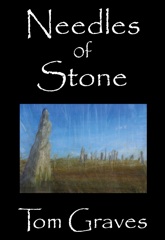
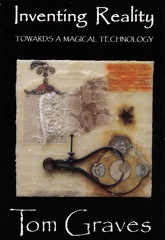
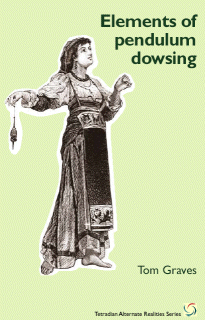
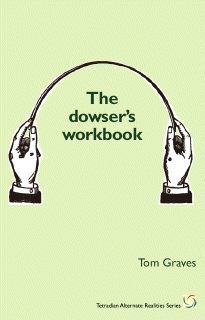
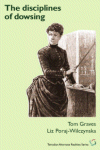
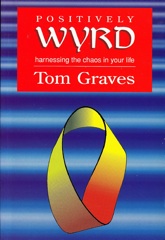
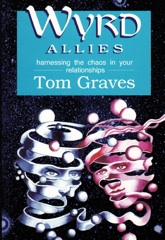
I actually felt (using that word deliberately, as it was gut-level) that Yabbies was an excellent illustration of Wyrd World (book 3). I recognized a lot of the concepts in the writing and enjoyed the book very much. Well done for getting that backlist out there. 🙂